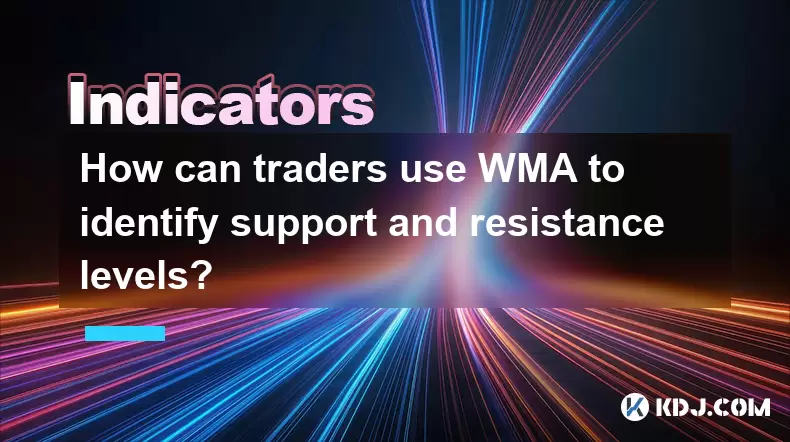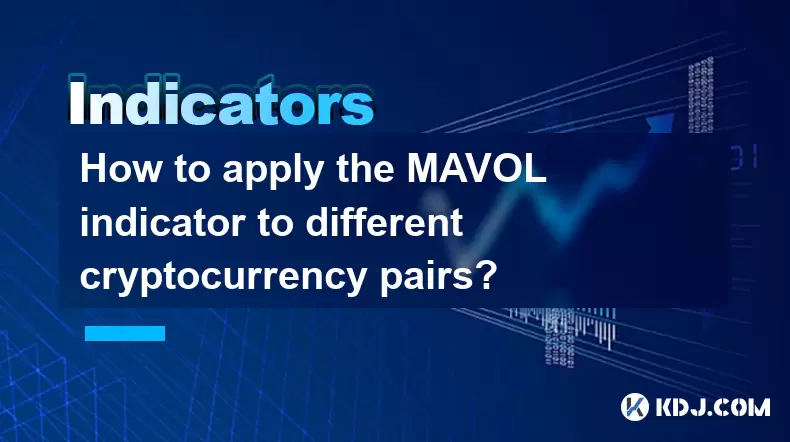-
 Bitcoin
Bitcoin $118400
0.47% -
 Ethereum
Ethereum $3836
2.20% -
 XRP
XRP $3.157
2.98% -
 Tether USDt
Tether USDt $0.9999
-0.03% -
 BNB
BNB $801.5
1.31% -
 Solana
Solana $180.9
2.07% -
 USDC
USDC $0.9999
-0.02% -
 Dogecoin
Dogecoin $0.2225
2.50% -
 TRON
TRON $0.3285
-1.02% -
 Cardano
Cardano $0.7789
2.60% -
 Hyperliquid
Hyperliquid $43.60
2.39% -
 Sui
Sui $3.892
4.41% -
 Stellar
Stellar $0.4229
3.34% -
 Chainlink
Chainlink $18.01
3.98% -
 Hedera
Hedera $0.2745
6.77% -
 Bitcoin Cash
Bitcoin Cash $582.3
3.38% -
 Avalanche
Avalanche $23.77
1.04% -
 Ethena USDe
Ethena USDe $1.001
0.01% -
 Toncoin
Toncoin $3.493
3.59% -
 Litecoin
Litecoin $110.0
2.48% -
 UNUS SED LEO
UNUS SED LEO $8.936
-0.37% -
 Shiba Inu
Shiba Inu $0.00001304
2.49% -
 Uniswap
Uniswap $9.999
1.09% -
 Polkadot
Polkadot $3.897
3.26% -
 Monero
Monero $308.6
-0.83% -
 Dai
Dai $0.9999
-0.01% -
 Bitget Token
Bitget Token $4.504
-0.04% -
 Pepe
Pepe $0.00001154
2.95% -
 Cronos
Cronos $0.1471
3.06% -
 Ethena
Ethena $0.6691
19.53%
How can traders use WMA to identify support and resistance levels?
The Weighted Moving Average (WMA) emphasizes recent prices, making it more responsive than SMA, ideal for spotting dynamic support/resistance in trending crypto markets like Bitcoin or Ethereum.
Jul 31, 2025 at 07:01 am

Understanding the Weighted Moving Average (WMA)
The Weighted Moving Average (WMA) is a technical indicator that assigns greater importance to recent price data, making it more responsive to new information compared to simple moving averages. Unlike the Simple Moving Average (SMA), which treats all data points equally, the WMA multiplies each closing price by a weighting factor, with the most recent prices receiving the highest weights. This responsiveness makes the WMA particularly useful for traders seeking to identify dynamic support and resistance levels in fast-moving cryptocurrency markets.
To calculate the WMA, traders apply a multiplier to each price based on its position in the data set. For example, in a 5-period WMA, the most recent closing price is multiplied by 5, the previous by 4, and so on, down to 1. The sum of these weighted prices is then divided by the sum of the multipliers (in this case, 1+2+3+4+5=15). The resulting value provides a smoothed yet sensitive line that can act as a real-time gauge of market sentiment.
Using WMA to Identify Dynamic Support
In trending markets, especially bullish ones, the WMA can act as a dynamic support level. When the price pulls back toward the WMA line and then bounces upward, it signals that buyers are still in control. Traders watch for these interactions closely, especially when the price approaches the WMA after a strong upward move.
- Confirm the trend by ensuring the price is trading above the WMA over multiple periods
- Observe price behavior as it nears the WMA line—look for bullish candlestick patterns like hammer or bullish engulfing formations
- Monitor volume during the bounce; increasing volume adds credibility to the support reaction
- Use additional confirmation tools such as RSI or MACD to validate momentum
When the price touches the WMA and reverses with strong follow-through, it suggests the WMA is functioning as a reliable support zone. This is especially effective in cryptocurrencies like Bitcoin or Ethereum, where trends often persist for extended periods due to momentum-driven trading.
Recognizing Resistance with WMA in Downtrends
Conversely, during bearish trends, the WMA often acts as a dynamic resistance level. As the price rallies toward the WMA from below, it may encounter selling pressure, leading to a rejection. This resistance behavior helps traders identify optimal shorting or exit points.
- Ensure the overall trend is downward, with the price consistently below the WMA
- Watch for rejection patterns such as shooting star or bearish engulfing candles near the WMA
- Check for confluence with other resistance indicators like Fibonacci retracement levels or previous swing highs
- Confirm with declining volume on upward moves and rising volume on downward moves
When the price fails to close above the WMA and reverses downward, it reinforces the resistance strength. In volatile crypto assets such as Solana or Dogecoin, this can offer repeatable trading opportunities during prolonged downtrends.
Combining Multiple WMA Periods for Precision
Traders often use multiple WMA periods to enhance accuracy in identifying support and resistance. For instance, plotting a 20-period WMA alongside a 50-period WMA creates layers of dynamic levels. The shorter WMA reacts faster, offering immediate support/resistance signals, while the longer WMA provides a broader context.
- Apply both 20-period and 50-period WMA on the same chart
- Observe how price interacts with each line—short-term bounces may occur at the 20-WMA, while deeper corrections test the 50-WMA
- Look for confluence where both WMAs cluster near the same price zone, increasing the significance of that level
- Use crossovers between the two WMAs as potential trend change signals
When both lines are approached and respected by price action, the combined resistance or support becomes stronger. This multi-layered approach is particularly useful in range-bound cryptocurrency markets, where price oscillates between dynamic boundaries.
Practical Steps to Apply WMA on Trading Platforms
To implement WMA effectively, traders must know how to set it up on popular platforms like TradingView, Binance, or MetaTrader.
- Open your preferred charting platform and load the cryptocurrency pair of interest
- Navigate to the indicators section and search for “Weighted Moving Average”
- Select the WMA and configure the period (common choices are 10, 20, or 50)
- Adjust the color and line thickness for better visibility—green for support-focused use, red for resistance
- Overlay additional tools like horizontal support/resistance lines or volume indicators for confirmation
Once applied, monitor how the price interacts with the WMA across different timeframes. For day traders, the 15-minute or 1-hour charts with a 20-period WMA are effective. For swing traders, 4-hour or daily charts with a 50-period WMA provide more reliable signals.
Using WMA with Price Action for Confirmation
Relying solely on WMA can lead to false signals, especially in choppy markets. Combining it with price action analysis increases reliability. Key patterns such as double bottoms near the WMA or rejection wicks enhance the validity of support/resistance zones.
- Identify if the price forms a clear reversal pattern upon touching the WMA
- Look for tight consolidation before breakout attempts, indicating accumulation or distribution
- Use horizontal levels that align with WMA zones to strengthen confluence
- Avoid trading WMA touches during major news events or low liquidity periods
In cryptocurrencies, where whipsaws are common, this combination helps filter out noise. For example, a bounce off the 20-WMA on Bitcoin’s 4-hour chart accompanied by a bullish engulfing candle and rising volume presents a high-probability long setup.
Frequently Asked Questions
Can WMA be used on all cryptocurrency timeframes?
Yes, the WMA is adaptable to all timeframes. Shorter periods like 10-WMA work well on 1-minute or 5-minute charts for scalping, while longer periods such as 100-WMA are effective on daily or weekly charts for identifying major trend direction. The key is adjusting the period to match the trading style and volatility of the asset.
How does WMA differ from EMA in identifying support/resistance?
While both WMA and EMA emphasize recent prices, the WMA applies a linear weighting, whereas the EMA uses an exponential smoothing method. The WMA tends to be slightly more sensitive to price changes, making it better for detecting immediate support/resistance reactions, especially in fast-moving crypto markets.
What should I do if the price breaks through the WMA?
A decisive close beyond the WMA may signal a trend reversal or acceleration. If the price breaks above the WMA in an uptrend, it may indicate strengthening momentum. In a downtrend, a break below could confirm bearish continuation. Traders should reassess their positions and look for retests of the WMA as a new resistance (in uptrends) or support (in downtrends).
Is WMA effective in sideways markets?
In ranging markets, the WMA may generate frequent false signals due to price oscillating around the line. It performs best in trending conditions. For sideways markets, combining WMA with Bollinger Bands or horizontal support/resistance levels improves accuracy.
Disclaimer:info@kdj.com
The information provided is not trading advice. kdj.com does not assume any responsibility for any investments made based on the information provided in this article. Cryptocurrencies are highly volatile and it is highly recommended that you invest with caution after thorough research!
If you believe that the content used on this website infringes your copyright, please contact us immediately (info@kdj.com) and we will delete it promptly.
- SEC, Crypto, and On-Chain: Navigating the Regulatory Maze
- 2025-08-01 02:31:40
- Bitcoin Bullish Market: How Long Positions are Boosting the Crypto King
- 2025-08-01 02:35:33
- Visa, Stellar, and Stablecoins: A New York Minute on the Future of Finance
- 2025-08-01 01:50:50
- BCH, FET, BlockDAG: Decoding the Crypto Buzz
- 2025-08-01 01:16:37
- Conflux Token, Crypto Simplicity, and WeWake Finance: A New Era?
- 2025-08-01 01:50:50
- Dogecoin, Remittix, and Analyst Targets: Navigating the Crypto Landscape
- 2025-08-01 01:55:40
Related knowledge

What does it signify when the MACD crosses below the zero line?
Aug 01,2025 at 01:43am
Understanding the MACD IndicatorThe Moving Average Convergence Divergence (MACD) is one of the most widely used technical analysis tools in the crypto...

How does the MACD histogram show momentum?
Aug 01,2025 at 01:16am
Understanding the MACD Histogram and Its Role in Cryptocurrency TradingThe MACD histogram is a visual representation of the difference between the MAC...

What is a MACD crossover?
Jul 31,2025 at 11:52pm
Understanding the Role of Private Keys in Cryptocurrency SecurityIn the world of cryptocurrency, private keys are the cornerstone of ownership and con...

How can you use the MACD histogram to determine trend strength?
Jul 31,2025 at 11:10pm
Understanding the MACD Histogram and Its ComponentsThe MACD (Moving Average Convergence Divergence) histogram is a visual representation of the differ...

What is the impact of different moving average types (SMA vs. EMA) on the MAVOL indicator?
Aug 01,2025 at 02:31am
Understanding the MAVOL Indicator in Cryptocurrency AnalysisThe MAVOL (Moving Average Volume) indicator is a technical analysis tool used in the crypt...

How to apply the MAVOL indicator to different cryptocurrency pairs?
Aug 01,2025 at 12:43am
Understanding the MAVOL Indicator in Cryptocurrency TradingThe MAVOL indicator, short for Moving Average Volume, is a technical analysis tool that app...

What does it signify when the MACD crosses below the zero line?
Aug 01,2025 at 01:43am
Understanding the MACD IndicatorThe Moving Average Convergence Divergence (MACD) is one of the most widely used technical analysis tools in the crypto...

How does the MACD histogram show momentum?
Aug 01,2025 at 01:16am
Understanding the MACD Histogram and Its Role in Cryptocurrency TradingThe MACD histogram is a visual representation of the difference between the MAC...

What is a MACD crossover?
Jul 31,2025 at 11:52pm
Understanding the Role of Private Keys in Cryptocurrency SecurityIn the world of cryptocurrency, private keys are the cornerstone of ownership and con...

How can you use the MACD histogram to determine trend strength?
Jul 31,2025 at 11:10pm
Understanding the MACD Histogram and Its ComponentsThe MACD (Moving Average Convergence Divergence) histogram is a visual representation of the differ...

What is the impact of different moving average types (SMA vs. EMA) on the MAVOL indicator?
Aug 01,2025 at 02:31am
Understanding the MAVOL Indicator in Cryptocurrency AnalysisThe MAVOL (Moving Average Volume) indicator is a technical analysis tool used in the crypt...

How to apply the MAVOL indicator to different cryptocurrency pairs?
Aug 01,2025 at 12:43am
Understanding the MAVOL Indicator in Cryptocurrency TradingThe MAVOL indicator, short for Moving Average Volume, is a technical analysis tool that app...
See all articles

























































































